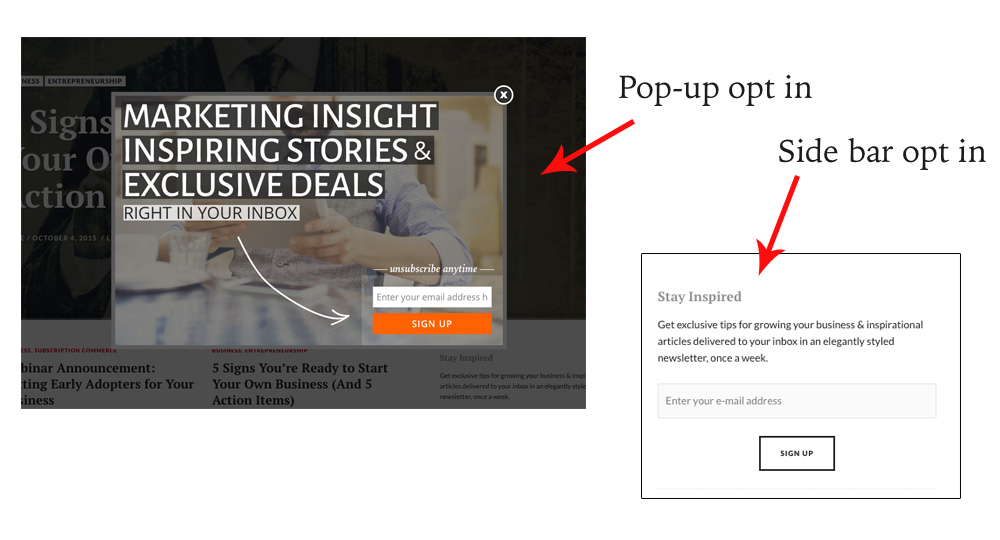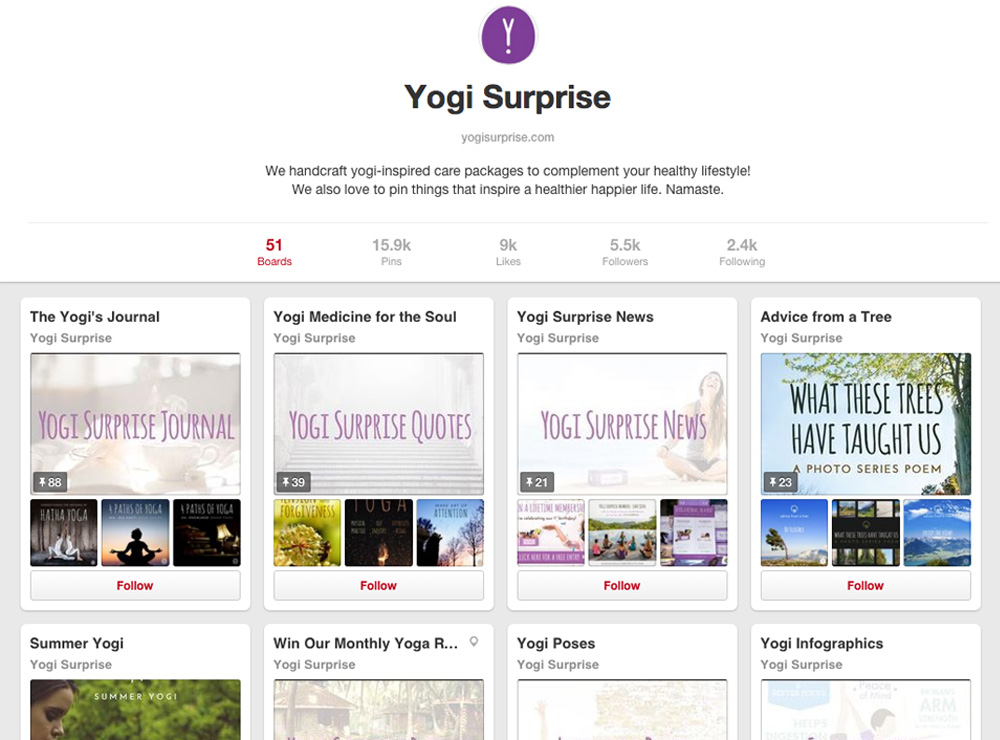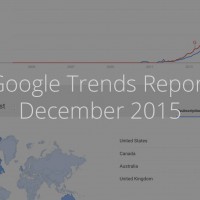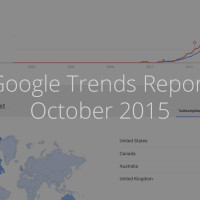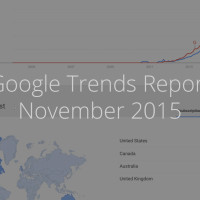
Marketing can be a touchy subject.
We all have our ideas, and often, we adopt a “Build it and they will come” mentality. It certainly helps us avoid a LOT of work by thinking this way…but it just doesn’t work like that. Rarely do ideas shine so much that people are just naturally drawn to them. We need to also be good marketers.
Why?
First, it’s mostly due to the amount of “noise” in our world. Hundreds (and hundreds) of millions of people, millions of projects – be they businesses, bands, nonprofits, or something else – and yes, millions of other things are trying to vie for our attention. You’ve got to get your idea to stand out, and once you have someone’s attention, you’ve got to direct them to the right action items.
Without further ado, here are 3 no-brainer marketing tips for any business. Brick and mortar? Do these 3 things. Online business? Do these 3 things. Nonprofit or cause-driven project? Do these three things. They can help any project get off the ground.
1. Lead Capture
Lead capture is a buzz word of sorts. It’s just a fancy way of saying getting attention from prospects. For a business, this could be potential customers. For a nonprofit, these are potential donors.
Consider this simple funnel:
Don’t be confused by these words. They’re pretty simple:
- Prospects: Consider prospects as anyone in your target market that you’re getting in front of (we’ll cover more on how to do that below). Prospects are interested in your product/market, and may consider signing up in some or fashion. They are not a lead – but we want them to be.
- Leads: Leads have done the most basic form of “signing up.” This is a non-committal signup. Think of it as someone who gives you their email address or contact information. Maybe they ‘pre-subscribed’ or somehow indicated interest in your project.
- Qualified Leads: The idea of “qualified leads” may or may not be used in your marketing funnel. What makes leads “qualified” is when they provide additional information, or they are definably more interested in your product. For example, if you gather contact information from people at a niche-oriented trade show, perhaps you should consider those people as having more of a need for your product. Alternatively, if you use high-level targeting in ads (like on Facebook), defining income levels, geographic location, etc, you can consider those leaving that ad funnel as more qualified.
- Customers/Adopters: Customers are those people who sign up for your service or purchase your product.
- Evangelists: Evangelists are what we all want our customers to be – hyper involved and hyper interested in getting out brand in more peoples’ hands.
Okay, so now that we know that set of definitions, we can talk about lead capture. This is how you will get people in the top of your funnel.
Here are 3 basic ways of executing lead capture for your business:
1. Opt-Ins
Opt-ins are pop-ups, or other type of opt-in requests, generated by your webpage. This includes exit-intent popups (that show when someone tries to leave your site), floating bar opt-ins, traditional opt-ins (like popups), and other fields requesting their email.
If you just hit my blog for the first time, you likely saw the popup requesting your email address. Also, if you look to the top right of my blog, you’ll see a sidebar opt-in.
Opt-ins like these are effective at doing two things: 1) converting traffic that might have not otherwise subscribed/purchased your products and 2) providing you with a list of interested people you can market to. That means more leads and more potential customers.
But remember: you need to make these opt-ins great by properly incentivizing your audience. Offer a deal, discount, or be specific about the product offering in a way that will intrigue your visitors.
For brick and mortar businesses, considering having a sign-up community form for deals or discounts. Alternatively, have a computer or iPad customers can use to join your mailing list for exclusive discounts.
2. Special “Events”
No, I’m not talking about holding a soirée at your house (though that would be pretty cool).
Rather, I’m talking about running giveaways, special contests, or even webinars and seminars that your audience would be interested in. In each case, you can make it a requirement to provide your email address to enter. Webinars, for example, can be a great place to both gather contact information and pitch your project and/or intelligently weave it into your subject matter.
Reminder: Keep local and state sweepstakes and giveaway laws in mind!
3. Use Gated Content
Gated content in this sense is a bit different from something like a webinar. Rather, this may be more advanced articles you produce on your blog, special videos, or an ebook or recipe guide. Require an email to access the content, which is then emailed to their contact address. This allows you to take longer, harder to produce pieces of content and leverage them to the best of your ability.
2. Automate Messaging
I mentioned automation primarily because of mentioning opt-ins for an electronic mailing list. It’s not enough to gather emails – you need to also engage with those users. One of the best ways to do this without having to worry about making weekly emails is to automate messaging.
Automation means exactly what it sounds like it means: automatic.
Consider these automated forms of messaging:
- A welcome email: Someone sign up for your newsletter list? Create an automation in your mail platform (I use Mailchimp) that schedules an email to be sent immediately. Welcome them into your community, provide a single CTA, and list your social links below.
- RSS Feed: If you’re constantly posting on your blog your channel, make sure your email subscribing are getting weekly (or some other time denomination) updates. You can create RSS feeds to automatically mail out these updates. If you’re using Mailchimp, it’s super easy.
- Transactional emails: Transactional emails are different than bulk marketing emails. These are emails you should have being sent when people are performing specific actions, like signing up, forgetting their password, or canceling. This may or may not be seem intuitive to you, but the big take away is this: customize them! Transactional emails, though by definition are “marketing” emails, are great places to list compelling selling propositions, ask for feedback, or other reinforce your branding.
3. Build Out Social Channels
Ah, yes, the classic “basic” task of building out your social channels. Rather than just say “Make a Facebook page” or “Create a Twitter,” I’ll attempt to do you one better.
- Facebook: Critical for any business nowadays, for certain.
- Be sure to choose the right classification of page from the get go.
- Keep it unpublished until you’ve got your photos, about, and basic contact information added.
- Schedule some posts using the Publishing tools section to make sure your first few days are interesting.
- Invite all your friends to like the page.
- Message all your friends to invite their friends.
- Regularly post non-sales oriented content. News videos, cute animals, that meteor shower from last week… you get the idea.
- Twitter: Personally, I’m not huge on Twitter. I suggest linking your Twitter to your Facebook page so it auto-tweets based on your Facebook posts. Check your notifications, and if you regularly get interest on here, then may spend more time create leads with this network. You can use tools like Followerwonk to help you optimize this.
- Pinterest: This is extremely useful if done well. Here’s a good example of doing it well (notice the album cover photos, the sheer amount of pins, and the cohesive branding across the Pinterest account):
- Instagram: I can’t say enough good thins about Instagram, except that I probably won’t feel this way forever as word gets out about how useful it is recently. For me, this is the best channel to engage with customers.
- Hashtags (#likethis) make it easy to find targeted people (qualified, remember?) and engage with them (likes, follows, comments).
- The same goes with posting photos. Hashtags make it easy for people to find your photos. Call it a hunch, but it just seems like people actually use hastags on this social network (unlike Pinterest, Facebook, Twitter, etc). I’m not saying these other networks don’t have use here, but it just seems more engaged on Instagram.
- Reciprocation! Twitter used to be this way, and still is to some effects, but instagram users tend to be very reciprocal in nature. That means they follow, like, and comment back!
- Be sure to post high-quality, niche-oriented content. It doesn’t have to be sales oriented (better if it isn’t, actually). Don’t be afraid to repost, just be sure to give credit where it’s due.
3 No Brainer Marketing Tips, Completed
With these 3 simple suggestions in mind, start applying the ideas and examples to your own business. Start this stuff NOW. It snowballs over time, and the more data you get, the better you can build these things in the future.
Questions? Ask below!


